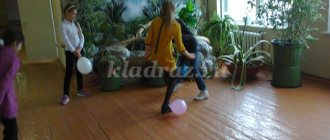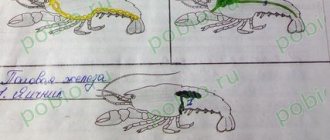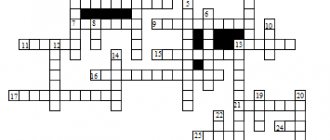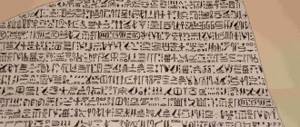Part 1
§ 1. ECONOMIC AND SOCIAL GEOGRAPHY
§ 2. ECONOMIC AND POLITICAL-GEOGRAPHICAL POSITION OF RUSSIA
§ 3. FORMATION OF THE TERRITORY OF RUSSIA
§ 4. ADMINISTRATIVE-TERRITORIAL STRUCTURE OF RUSSIA
§ 5. ZONING OF THE TERRITORY OF RUSSIA
§ 6. NATURAL CONDITIONS OF RUSSIA
§ 7. NATURAL RESOURCES OF RUSSIA
§ 8. ECONOMIC ACTIVITIES AND CHANGES IN THE NATURAL ENVIRONMENT
§ 9. POPULATION OF RUSSIA
§ 10. DISTRIBUTION OF THE POPULATION OF RUSSIA
§ 11. MIGRATIONS OF POPULATION
§ 12. RURAL FORM OF SETTLEMENT
§ 13. URBAN FORM OF SETTLEMENT
§ 14. ETHNIC AND RELIGIOUS COMPOSITION OF THE POPULATION
§ 15. LABOR RESOURCES AND LABOR MARKET
§ 16. NATIONAL ECONOMY
§ 17. FACTORS OF PRODUCTION LOCATION
§ 18. FUEL AND ENERGY COMPLEX (FEC). OIL AND GAS INDUSTRY
§ 19. FUEL AND ENERGY COMPLEX. COAL INDUSTRY
§ 20. FUEL AND ENERGY COMPLEX. ELECTRIC POWER INDUSTRY
§ 21. METALLURGICAL COMPLEX. FERROUS METALLURGY
§ 22. METALLURGICAL COMPLEX. NON-FERROUS METALLURGY
§ 23. MECHANICAL ENGINEERING COMPLEX
§ 24. MECHANICAL ENGINEERING COMPLEX
§ 25. CHEMICAL INDUSTRY
§ 26. FORESTRY INDUSTRY
§ 27. AGRICULTURAL COMPLEX. PLANT CULTIVATION
Transport complex of Russia 9th grade Dyrova L.B. Secondary school 1, Timashevsk, 2011. - presentation
Transport complex of Russia 9th grade Dyrova L.B.
Secondary school 1 Timashevsk 2011 Epigraph 4 The efficiency of the national economy, economic growth, the sustainability of the development of industry and territorial complexes, and foreign economic activity are traditionally determined by the functioning of transport.
Main task: 4 Transport is a special sphere of material production and an independent branch of the economy. It exchanges products between enterprises, regions and countries, promotes the development of new territories and the development of specialization, moves cargo and passengers, being the basis for the territorial division of labor.
Transport is divided according to purpose: 4 public use 4 personal use
By nature of work performed: 4 for passenger 4 for cargo
transportlandwaterair
Each type of transport has its own specifics, but to ensure the functioning of the country’s economy, they must be interconnected, working in concert. Transport system is a set of all types of transport interconnected by transport hubs, i.e. points where several modes of transport converge. Transport hub of Moscow
Let's analyze the diagrams: Sl.
Conclusions: Cargo transportation: 1. Railway; 2. Pipeline; 3. Automotive. Freight turnover: 1. Pipeline; 2. Railway. Railroad transport is the main mode of transport in Russia, although in terms of overall freight turnover it is inferior to pipeline transport, it is universal: it can be used to transport any cargo and passengers.
Sl.
Conclusions: Passenger transportation: 1. Bus 2. Trolleybus 3. Tram 4. Metro Passenger turnover: 1. Bus 2. Rail 3. Air 4. Metro Bus transport is the main one in the transportation of passengers, and in passenger turnover the competitor is the railway.
Cost: 1. Sea 2. Automobile 3. Rail 4. Aviation by increase: Free sea routes Sl.
Freight turnover is the product of the amount of cargo transported (in tons) and the transportation distance (in km). It is measured in net km (in maritime transport in ton-miles, where a mile = 1.852 km). Passenger turnover is an economic indicator of transport operation, equal to the product of the number of passengers transported in a certain time by the transportation distance. The cost of transportation is defined as the ratio of the operating costs for the transportation of goods, per 1 tonne-kilometer of freight turnover, and the cost of passenger transportation - as the amount of operating costs for the transportation of passengers, per 1 passenger-kilometer of passenger turnover, on average. Dictionary
Practical work: 4 Using the atlas maps “Transport” and “Population Density”, make a comparison and draw a conclusion about the connection between transport and population distribution. Populated areas gravitate towards transport routes (saving time)
Practical work: 4 Using table 43 of the textbook, determine which industries transport has a decisive influence on the location of, and which have an insignificant impact on? Transport has a decisive influence on the location of ferrous and non-ferrous metallurgy, basic chemistry, and a minor influence on precision engineering and light industry.
Consolidation of material: 1. The first place in Russia in terms of cargo turnover is occupied by ..... transport. 4 a) railway 4 b) pipeline 4 c) automobile
2. The densest transport network has been formed in Russia ... 4 a) in the west 4 b) in the north 4 c) in the east
3. The cheapest transportation: 4 a) rail 4 b) road 4 c) sea
4. Weather conditions have a particularly strong impact on the operation of... 4 a) air transport 4 b) road transport 4 c) pipeline transport
5. The leader in the transportation of passengers is: A. Bus B. Aviation C. Railway
Homework. 4 § 34 4 Research work. Conduct a survey of your family: 4 1. Do you use public transport (minibuses)? 4 2.How do you evaluate the performance of urban transport? 4 3.What are you unhappy with? 4 4. How to improve transport performance? 4 5. What new routes would you propose?
Part 2
§ 28. AGRICULTURAL COMPLEX. ANIMAL HUSBANDRY
§ 29. ZONAL SPECIALIZATION OF AGRICULTURE
§ 30. FOOD AND LIGHT INDUSTRY
§ 31. TRANSPORT COMPLEX
§ 32. INTANGIBLE SPHERE OF ECONOMY
§ 33. EUROPEAN NORTH. GENERAL INFORMATION
§ 34. EUROPEAN NORTH. POPULATION, NATURAL RESOURCES AND ECONOMY
§ 35. EUROPEAN NORTHWEST, GENERAL INFORMATION
§ 36. EUROPEAN NORTHWEST. POPULATION, NATURAL RESOURCES AND ECONOMY
§ 37. CENTRAL RUSSIA. GENERAL INFORMATION
§ 38. CENTRAL RUSSIA. POPULATION AND NATURAL RESOURCES
§ 39. CENTRAL RUSSIA. FARM
§ 40. EUROPEAN SOUTH. GENERAL INFORMATION
§ 41. EUROPEAN SOUTH. POPULATION, NATURAL RESOURCES AND ECONOMY
§ 42. VOLGA REGION. GENERAL INFORMATION
§ 43. VOLGA REGION. POPULATION, NATURAL RESOURCES AND ECONOMY
§ 44. URAL. GENERAL INFORMATION
§ 45. URAL. POPULATION, NATURAL RESOURCES AND ECONOMY
§ 46. WESTERN SIBERIA. GENERAL INFORMATION
§ 47. WESTERN SIBERIA. POPULATION, NATURAL RESOURCES AND ECONOMY
§ 48. EASTERN SIBERIA. GENERAL INFORMATION
§ 49. EASTERN SIBERIA. POPULATION, NATURAL RESOURCES AND ECONOMY
§ 50. FAR EAST. GENERAL INFORMATION
§ 51. FAR EAST. POPULATION, NATURAL RESOURCES AND ECONOMY
practical work in geography grade 9 methodological development in geography (grade 9) on the topic
Schedule of practical work
(9th grade)
| № p/p | Title of practical work | the date of the | |
| plan | fact | ||
| 1 | Analysis of maps of the administrative-territorial and political-administrative division of the country. | ||
| 2 | Determination of patterns in population distribution using maps and statistical materials and their explanation. | ||
| 3 | Determination from maps and statistical materials of the largest nations and the characteristics of their location. | ||
| 4 | Determination of the main indicators characterizing the population of the country and its individual territories. | ||
| 5 | Grouping of industries according to various indicators. | ||
| 6 | Determination of the main areas for the location of labor-intensive and metal-intensive mechanical engineering industries | ||
| 7 | Compilation of characteristics of one of the coal basins using maps and statistical materials | ||
| 8 | Identification from maps of the main areas for growing grain and industrial crops, the main areas for livestock raising. | ||
| 9 | Analysis of economic maps to determine the types of territorial structure of the economy. | ||
| 10 | Assessment of the environmental situation in different regions of Russia. | ||
| 11 | Assessment of natural resources and their use. | ||
Practical work No. 1.
Analysis of maps of the administrative-territorial and political-administrative division of the country.
Objectives of the work: to develop the ability to analyze geographical maps using the example of the political and administrative map of Russia;
Progress:
A. Remember the rules for analyzing a geographic map. (Textbook by I. I. Barinov Geography. Nature of Russia. p. 269,)
Rules for analyzing a geographic map:
1. Read the name of the card.
2. Determine its scale.
3. Study the legend and determine what and how is shown on the map.
4. Find a given territory on the map and, using the legend and nomenclature, tell what is in this territory.
5. If the data on one card is not enough to answer, use other cards you need.
B. Using this plan, characterize the atlas map.
B. Solve the following problems using the map:
A) In what direction from Moscow are: St. Petersburg, Arkhangelsk, Astrakhan, Novosibirsk.
Practical work No. 2.
R&D: Determination of patterns of population distribution using maps and statistical materials and their explanation.
Objectives of the work: - to develop knowledge about the characteristics of population distribution, about areas with the highest and lowest population density, to explain the reasons for the uneven distribution of the population;
— to develop skills in analyzing textual material, “Population Density” maps and formulating conclusions based on their analysis.
Work progress:
Task: 1. study the text of the textbook p. 45-49.
2. fill out the table.
| Plan | Main settlement area | North Zone |
| 1. Geographical position | ||
| 2. Area | ||
| 3.Population | ||
| 4. Medium density | ||
| 5. Conditions for economic development. |
3. Draw a conclusion: what reasons influence the distribution of the population throughout the country?
Practical work No. 3
R&D: Determination of the largest nations and features of their location using maps and statistical materials.
Objectives of the work: - to identify the largest peoples of Russia, the features of their location;
— continue to develop the ability to work with maps and statistical materials, to make analysis, generalizations and conclusions based on them.
Sequence of work:
1. Using Table 7 p. 35 of the textbook, identify the largest peoples for each language family.
2. Analyzing the map of the atlas “Peoples” p. 8, determine the areas where the largest nations are located
3. Present the results of your work in the form of a table.
| Language family | Largest nations | Number | Areas of compact residence |
| 1. And…………(89%) | 1. 2. 3. | ||
| 2. A……………(?) | 1. 2. 3 | ||
| 3.U………..(?) | 1. 2. 3 | ||
| 4. Caucasian(?) | 1. 2. 3 |
4. List the largest nations of Russia: 1. …., 2……, 3…… .
5. Which areas of our country are characterized by the greatest diversity of national composition?
6. Define a language family, religion for peoples:
Ossetians Kalmyks
Chuvash Khanty
Yakuts
Practical work No. 4.
R&D: Determination of the main indicators characterizing the population of the country and its individual territories.
Goals of work: developing skills to work with demographic indicators and population maps, compare indicators and draw conclusions.
Teaching aids: atlas map p.4-5,6,7,8-9,
Indicators characterizing the population
- number and its dynamics
- intensity of demographic processes: birth rate, death rate, natural increase.
- settlement, density, urbanization, migration
- age-sex composition and marital status
- the level of education
- racial, linguistic, ethnic and religious composition
- level of socio-economic development, standard of living.
Progress:
Assignment: compare the main demographic indicators characteristic of Russia, the Republic of Tatarstan, and the city of Naberezhnye Chelny.
| Indicators | Russia | Tatarstan | Naberezhnye Chelny |
| 1. Population | |||
| 2. Fertility | |||
| 3. Mortality | |||
| 4. Natural growth | |||
| 5.Area | |||
| 6.Population density | |||
| 7. Proportion of urban population | |||
| 8. Level of education | |||
| 9. Ethnic composition |
Draw a conclusion.
Practical work No. 5
R&D: Grouping of industries according to various indicators.
Objectives of the work: - Based on various sources of information, study the division of industries according to various indicators;
— continue to develop the ability to work with statistical materials, textbook text, and answer questions.
Sequence of work:
1. Include in the diagram the types of farm structure and their main elements:
Farm structure
| Industry structure | Territorial structure |
| Composition, correlation and connections between individual sectors of the economy | The combination, relative location and interconnections of all territorial units of the economy (districts, settlements, communication systems) |
2. What areas of activity does the farm consist of?
3. List the intersectoral complexes of the economy.
4. What sectors is the economy divided into?
| Sector | Branches of the economy |
Practical work No. 6
Topic: Determination of the main areas for the location of labor-intensive and metal-intensive mechanical engineering industries
Objectives of the work: - determine the main areas for the location of labor-intensive and metal-intensive mechanical engineering.
- consolidate the ability to analyze and compare maps, make generalizations and conclusions.
| Reference Labor-intensive mechanical engineering is a production associated with the manufacture of machines consisting of many parts and requiring a large number of workers to assemble parts and assemblies. Precision engineering (a type of labor-intensive engineering) is the production of complex machines and instruments that require highly qualified personnel. Metal-intensive mechanical engineering is the production of large-sized machines (for example, railway locomotives) or components (engines for power plants), requiring large amounts of metal. |
Progress:
1. 1. Remember which branches of mechanical engineering are labor-intensive and which are metal-intensive.
2. Analyze the atlas map: Mechanical Engineering. In which areas will labor-intensive and in which metal-intensive mechanical engineering prevail?
3. Present the results of your work in the form of a table
| Types of mechanical engineering | Examples of industries | Production Features | Main accommodation areas | Placement factors |
| Labor-intensive | ||||
| Metal intensive |
4. Draw a conclusion.
Practical work No. 7
R&D: Compilation of characteristics of one of the coal basins using maps and statistical materials.
Objectives of the work: to compile a description of the Pechora coal basin; check and evaluate the ability to compare various forms of presented material (text maps, textbook text, additional information, statistical materials), select the main thing, make generalizations and conclusions.
Progress
- Review the coal basin characterization plan.
- After studying the text of the textbook “Coal Industry” on pages 15 – 18 of the textbook, figures 4 on page 5, 16 on page 16, table 1 on page 17, select information to characterize the Pechora coal basin.
- Give a description of the Pechora coal basin, and present the results of your work in the form of a table.
| Coal Basin Characterization Plan | Brief records of work results |
| Name of the pool. Type of mined coal (hard, brown). | |
| Geographical position. | |
| Coal reserves: a) general geological; b) industrial. | |
| Conditions of occurrence (close to the surface or deep, thickness of layers). | |
| Production volume. | |
| Extraction method. | |
| Quality of mined coal. | |
| Cost price. | |
| Transportation direction. | |
| Transport efficiency. | |
| Development prospects. |
- Draw a conclusion: what indicators most significantly influence the operation and prospects of the Pechora coal basin.
Practical work No. 8
R&D: Identification from maps of the main areas for growing grain and industrial crops and the main areas for livestock raising.
Purpose of the work: - to determine the main areas for growing grain and industrial crops, the main areas for livestock raising; identify the reasons on which the location of the main branches of agriculture depends. - test and evaluate the ability to analyze economic maps, draw generalizations and conclusions based on the analysis.
Sequence of work execution.
1. For work you need economic maps of the atlas pp. 35, 37,39,41,44-45,47,51, text of the textbook. Based on their analysis, identify the main areas for growing grain and industrial crops, and the main areas for livestock raising.
2. Fill out the table. Agriculture.
| Main crops | Conditions affecting placement | Main accommodation areas |
Livestock
| Directions of livestock farming | Conditions affecting placement (food supply) | Main accommodation areas |
3. Draw a conclusion: on what reasons does the geography of the main branches of agriculture depend?
Practical work No. 9.
Topic: Analysis of economic maps to determine types of territorial structure of the economy
Objectives of the work: based on the analysis of economic maps, determine the types of territorial structure of the economy;
Work progress:
Fill out the table as you explore the areas.
| Type of territorial structure | Geographical pattern | Districts |
| Radial-ring | ||
| Radial-arc | ||
| Lattice | ||
| Seaside | ||
| Banded | ||
| Pool | ||
| Focal |
Practical work No. 10
R&D: Assessment of the environmental situation in different regions of Russia.
Purpose of the work: - test students’ ability to analyze and evaluate the environmental situation of the region; continue to develop the ability to forecast changes in the environmental situation.
Teaching aids: textbook, atlas, periodical materials.
Option 1.
Using the text of the textbook, information from periodicals and the contents of atlas maps, draw up a diagram in your notebooks that characterizes the ecological situation of the Urals.
1. Name the factors that determine the difficult environmental situation in the Ural region of Russia.
Present your answer in the form of a diagram.
The emergence of environmental problems.
- Presence of dirty industries
- Powerful industrial concentration of harmful substances.
- Acute shortage of water resources, pollution of existing
- Disposal of radioactive waste.
- Raw material depletion.
2. List possible ways to improve the environmental situation in the Urals and give a forecast of changes in the environmental situation.
| Measures to improve the environmental situation in the Urals. | Consequences of the measures taken. |
Option 2.
1. Having studied the text, determine the reasons for the unfavorable environmental situation in the Urals.
2. Characterize the current situation, showing with specific examples how it manifests itself.
| Environmental and other problems. | Their characteristics. |
| Air ecology | |
| Soil ecology | |
| Ecology of water | |
| Ecology | |
| Problems of the defense complex | |
| Depressive state of agriculture in the south of the Urals |
3. Make a “diagnosis” of the environmental situation (crisis, alarming, favorable, etc.). Justify the answer and determine ways to solve these problems and situations in general.
| Name of the area with an acute environmental situation | Factors causing unfavorable environmental conditions | Ways to improve the environmental situation | Expected results from the proposed activities. |






